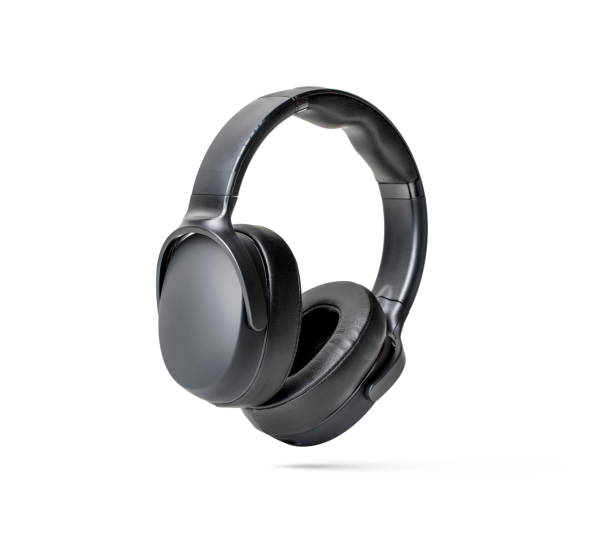Audio Equipment Components and Setup Guide
Understanding audio equipment involves more than just buying speakers and plugging them in. From home theater systems to professional studio setups, the world of audio technology encompasses various components, configurations, and considerations that can significantly impact your listening experience. Whether you're setting up a simple stereo system or designing a complex multi-room audio network, knowing the fundamentals helps you make informed decisions that match your space, budget, and sound quality expectations.

Types of Audio Systems for Different Applications
Audio systems come in several distinct categories, each designed for specific environments and purposes. Home theater systems typically include surround sound speakers, a center channel, and subwoofers to create an immersive cinematic experience. These setups often feature 5.1 or 7.1 configurations, referring to the number of speakers and subwoofers in the arrangement.
Portable speakers have evolved significantly, offering wireless connectivity and impressive sound quality despite their compact size. Modern portable options include Bluetooth speakers, wireless multi-room systems, and battery-powered units suitable for outdoor use.
Professional setups require different considerations, focusing on accuracy, power handling, and reliability. Studio monitors, PA systems, and live sound equipment prioritize flat frequency response and durability over consumer-friendly features.
Key Components in Audio Equipment
Amplifiers serve as the power source for your speakers, converting low-level audio signals into the electrical energy needed to drive speaker drivers. Integrated amplifiers combine preamplification and power amplification in one unit, while separate components offer more flexibility and potentially better performance.
Receivers function as the central hub in many audio systems, combining amplification with input switching, radio tuning, and often video processing capabilities. Modern AV receivers support multiple HDMI inputs, wireless streaming, and advanced audio processing formats.
Sound processors handle digital signal processing tasks, including equalization, crossover management, and room correction. These components can significantly improve audio quality by compensating for acoustic challenges in your listening environment.
How to Choose Audio Equipment Based on Room Size and Sound Quality Needs
Room dimensions directly influence speaker selection and placement. Smaller spaces benefit from bookshelf speakers or compact floor-standing models, while larger rooms may require more powerful speakers with greater output capabilities. Consider the room’s acoustic properties, including hard surfaces that reflect sound and soft furnishings that absorb it.
Sound quality needs vary based on your primary use cases. Critical listening requires speakers with accurate frequency response and minimal distortion, while casual background music playback may prioritize convenience and aesthetics over absolute fidelity.
Power matching between amplifiers and speakers ensures optimal performance and prevents damage. Check speaker sensitivity ratings and power handling specifications to determine appropriate amplifier power levels.
| Component Type | Example Products | Price Range | Key Features |
|---|---|---|---|
| Bookshelf Speakers | KEF LS50, ELAC Debut 2.0 | $200-$2,500 | Compact design, accurate sound |
| AV Receivers | Denon AVR-X2700H, Yamaha RX-V6A | $400-$1,200 | Multiple inputs, room correction |
| Portable Speakers | JBL Flip 6, Sonos Move | $100-$400 | Wireless, battery powered |
| Subwoofers | SVS SB-2000, REL T/7x | $500-$1,500 | Deep bass extension |
Prices, rates, or cost estimates mentioned in this article are based on the latest available information but may change over time. Independent research is advised before making financial decisions.
Maintenance and Calibration Tips for Achieving Optimal Sound Performance
Regular maintenance extends equipment lifespan and maintains sound quality. Dust accumulation on speaker drivers and electronic components can affect performance, so gentle cleaning with appropriate tools prevents buildup. Check cable connections periodically, as loose connections cause signal degradation and potential damage.
Calibration involves adjusting system settings to match your room’s acoustics and personal preferences. Many modern receivers include automatic room correction systems that use microphones to measure your space and adjust frequency response accordingly. Manual calibration using test tones and measurement tools offers more precise control.
Speaker positioning significantly impacts sound quality. Follow manufacturer recommendations for distance from walls, toe-in angles, and height positioning. Small adjustments can produce noticeable improvements in imaging and soundstage presentation.
Emerging Trends in Wireless and Smart Audio Technology
Wireless audio technology continues advancing, with higher-quality codecs like aptX HD and LDAC providing near-lossless transmission over Bluetooth connections. Wi-Fi-based systems offer even better quality and multi-room capabilities, allowing synchronized playback throughout your home.
Smart speakers integrate voice assistants with audio playback, enabling hands-free control and integration with home automation systems. These devices often support multiple streaming services and can function as part of larger multi-room audio networks.
Spatial audio formats like Dolby Atmos and DTS:X create three-dimensional soundscapes using height channels and advanced processing. These technologies work with both dedicated height speakers and virtualization techniques that simulate overhead sound using traditional speaker layouts.
Active noise cancellation in headphones and earbuds has become more sophisticated, with adaptive algorithms that adjust to changing environments. Some systems now offer transparency modes that blend ambient sound with your audio content for safer outdoor use.
The integration of artificial intelligence in audio processing enables automatic optimization based on content type and listening preferences. Machine learning algorithms can adjust equalization, dynamic range, and spatial processing in real-time to enhance the listening experience across different types of content.




